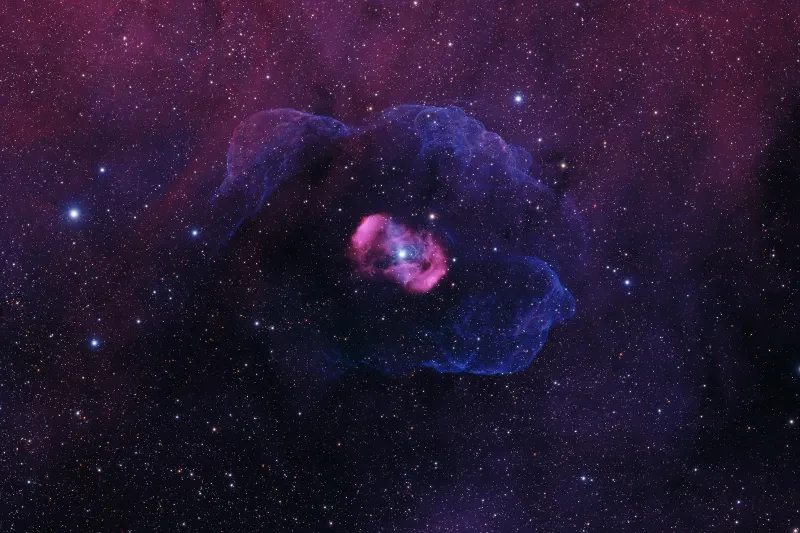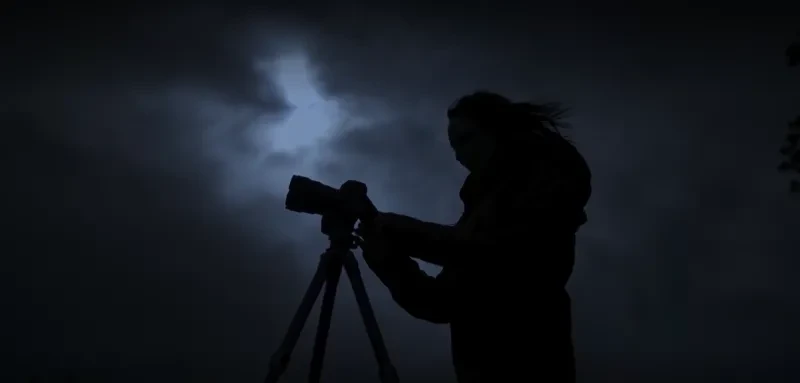
The shortlist for 2024 has now been revealed. See a brand new set of images from the world's greatest space photography competition.
Distant galaxies, fiery Suns and shimmering Northern Lights are just some of the incredible sights captured in the shortlist for Astronomy Photographer of the Year 2023.
Astronomy Photographer of the Year, the world’s largest astrophotography competition, attracts thousands of submissions each year and showcases awe-inspiring images from the best astronomy photographers across the globe.
Now in its 15th year, the standard of the competition has never been higher - but who will win the coveted big prize?
See a selection of images from the shortlist below. For the latest updates on the competition, follow the hashtag #APY15 on social media, and sign up to our space newsletter. The winners will be announced on 14 September 2023.
Never miss a shooting star
Sign up to our space newsletter for exclusive astronomy news, guides and events, and be among the first to see this year's Astronomy Photographer of the Year winners
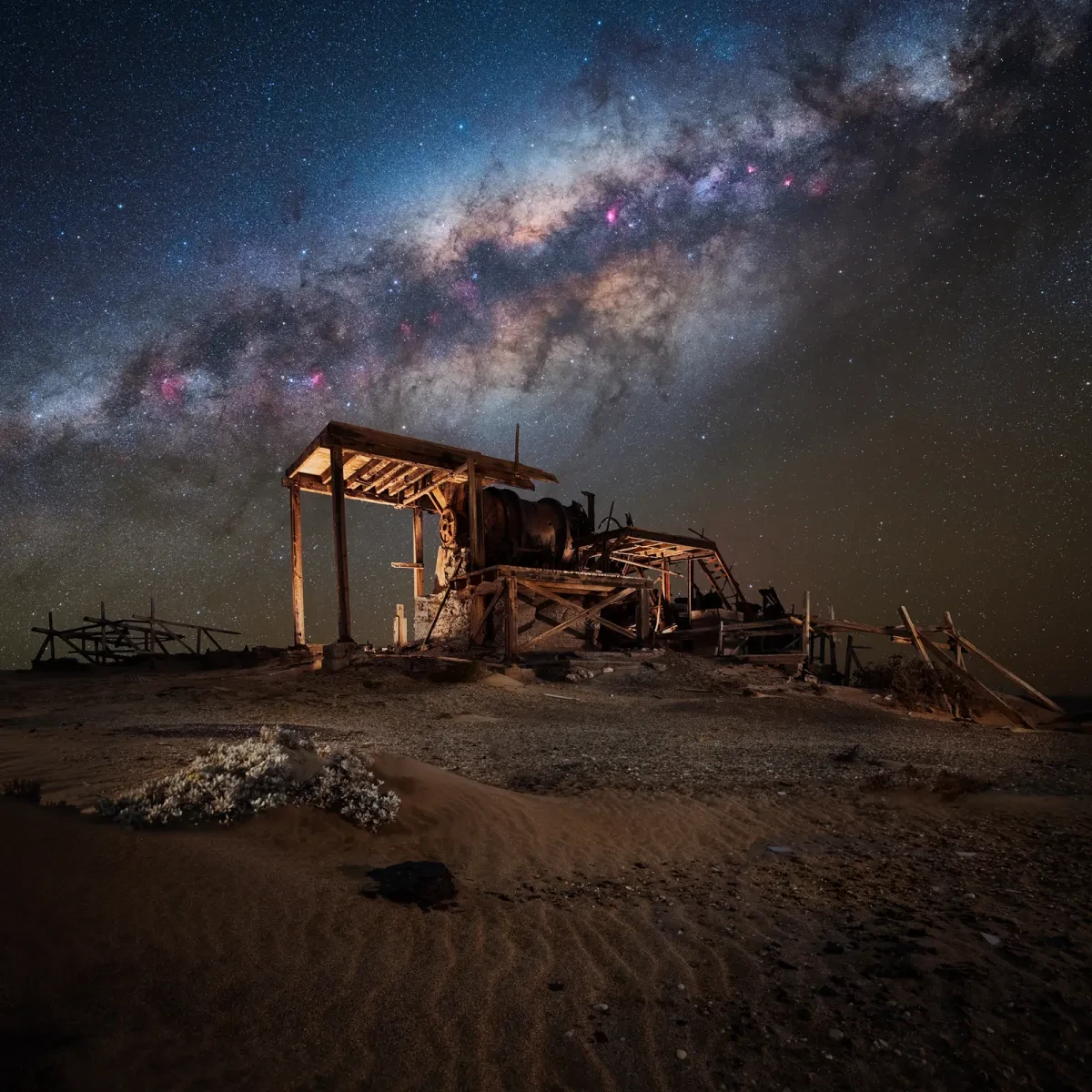
Sperrgebiet by Vikas Chander
Bogenfels, Namib Desert, Namibia
"Sperrgebiet, or the restricted area, is a diamond-mining region in Namibia. In the early 1900s the Germans built many diamond-mining settlements in the area, Kolmanskop being the best known. Further to the south of Kolmanskop are Pomona and Bogenfels and it is said that the diamonds here lay on the surface, glinting during Full-Moon nights making for easy pickings," Vikas explains.
"When the Germans eventually left ghost towns remained, which are still preserved in their natural state although in an advanced state of neglect and rot. Seen here is one of those decayed processing plants in the area around the settlement of Bogenfels."
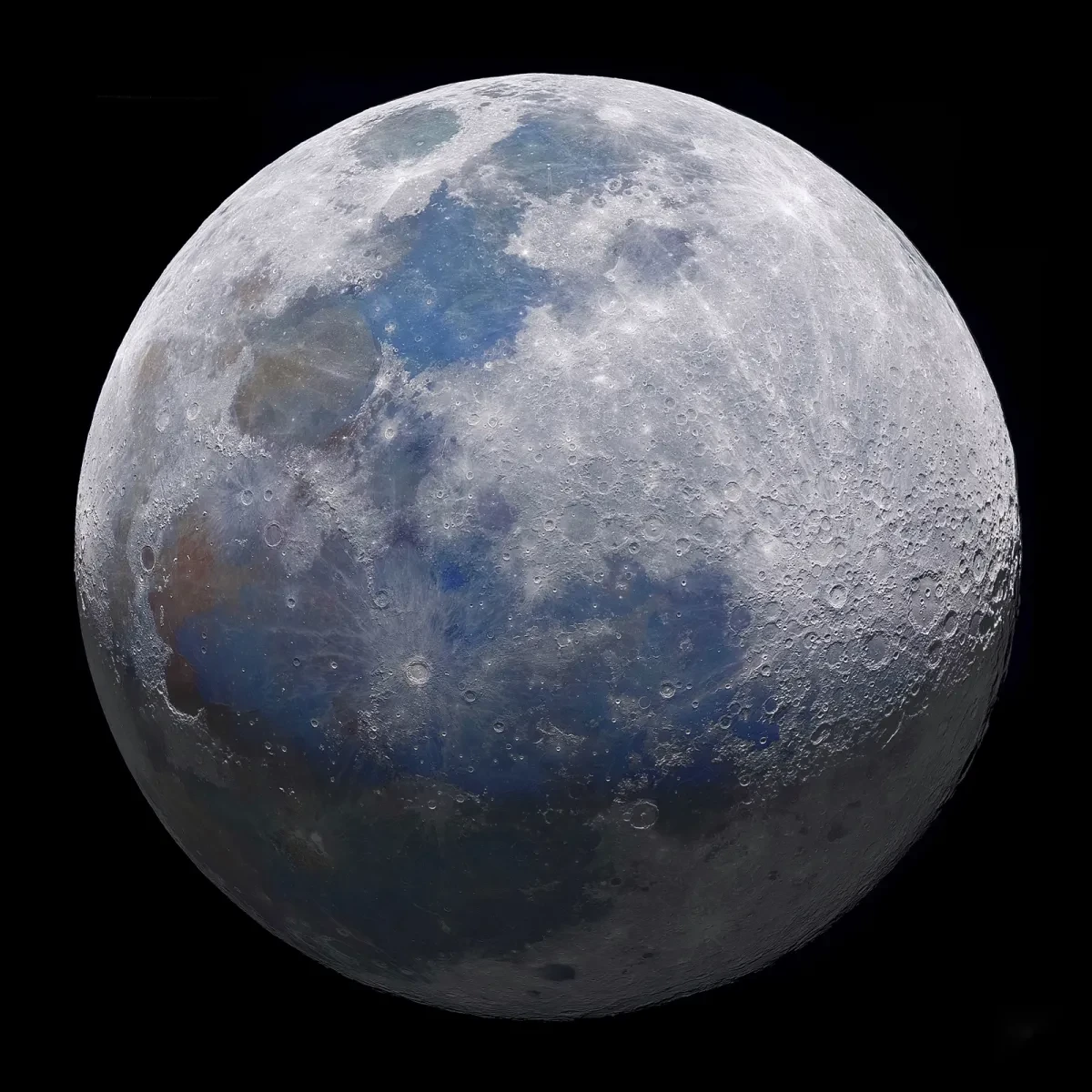
Ball of Rock by Rich Addis
Wallasey, Wirral, Merseyside, United Kingdom
"This 78% Moon is blended with a previous Full Moon to create a composite giving the effect of a 3D sphere," says Rich.
"This is only possible due to extremely favourable libration between the two images. The libration is the tilt of the Moon which varies more than you would think and makes it very difficult to find two images that line up properly. There are many images similar to this out there, but upon closer inspection, they often have duplicated features and are not as well matched. The image is a 22-panel mosaic. Each panel is 400 frames stacked and manually stitched together."
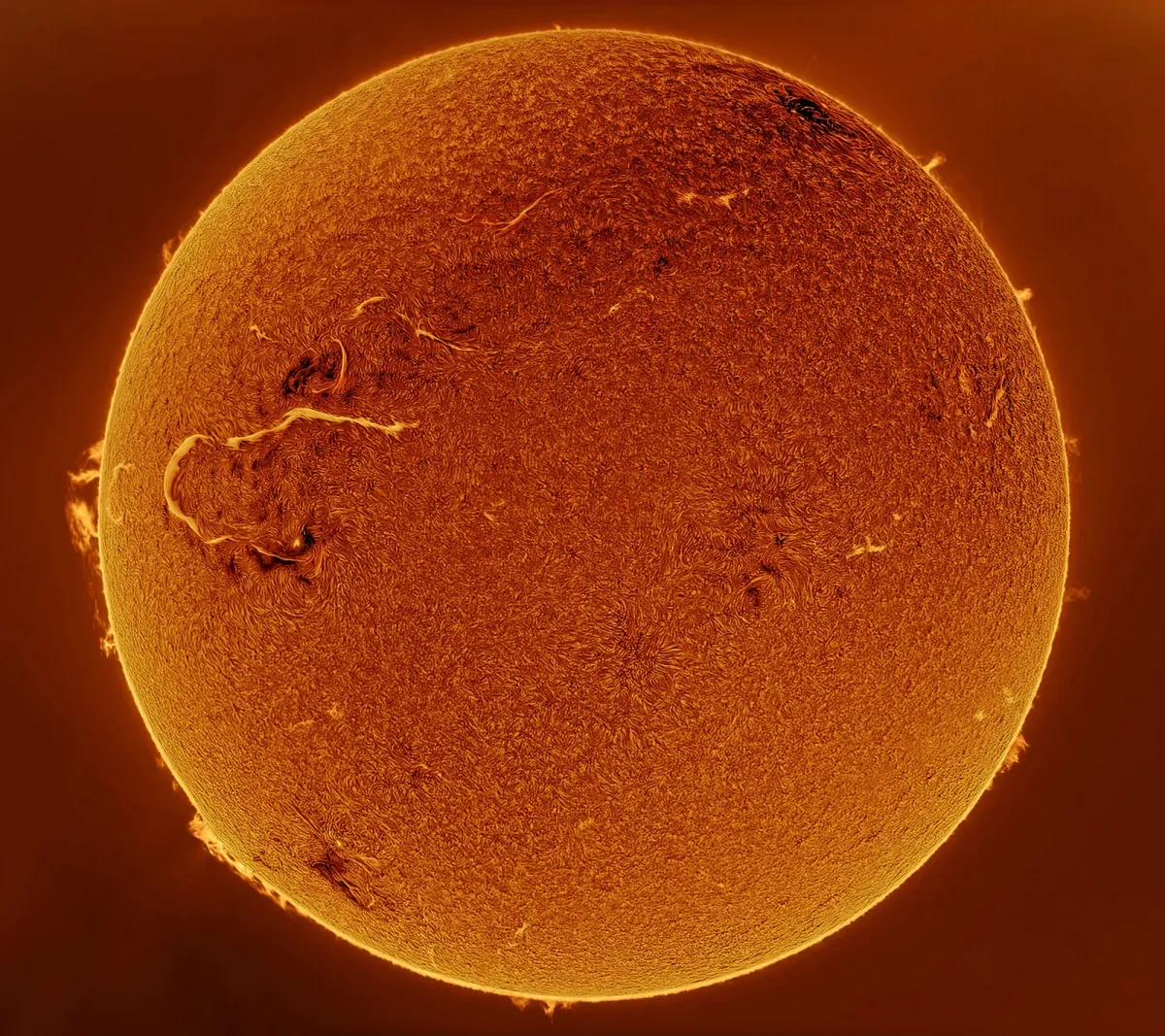
The Great Solar Flare by Mehmet Ergün
Traisen, Germany
Mehmet says, "Here we see our sun, photographed using an H-alpha solar telescope. The Sun is moving towards its maximum cycle, and in the photo, we can see a large solar flare. Solar flares are sudden bursts of magnetic energy on the surface of the Sun. These eruptions can be very large, as seen in the image.
"According to our calculation, this solar flare is about 700,000 km long; Earth has a diameter of about 12,700 km."
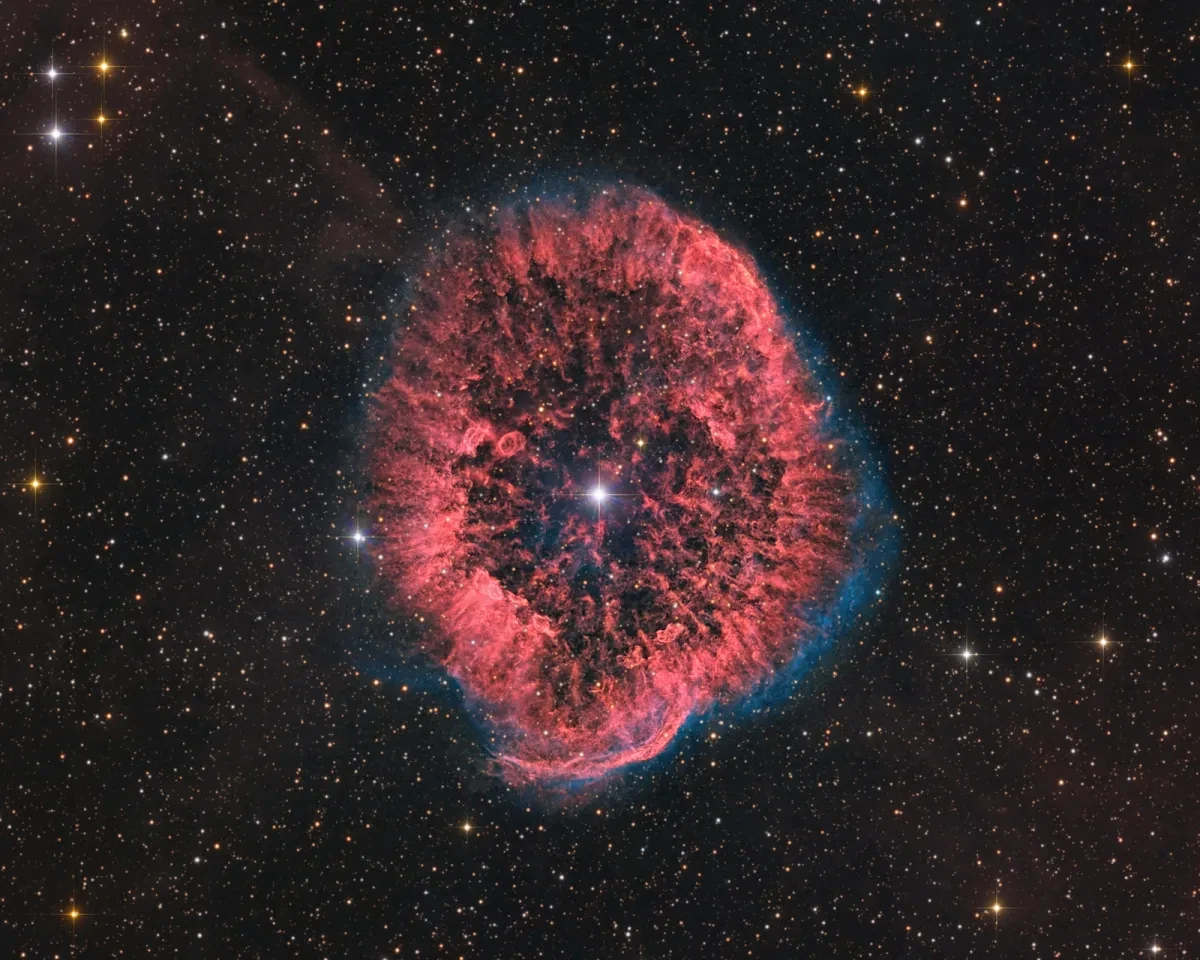
RCW58: Wolf Rayet Bubble by Mark Hanson and Mike Selby
El Sauce Observatory, Río Hurtado, Chile
According to the astronomers, "This just looks like you can hear it sizzling!"
They continue, "RCW58 is a Wolf Rayet (WR) Bubble formed by the ejecta from WR 40, the central star in the image. These three-dimensional bubbles appear as a ring in two dimensions, as seen in this image, and represent the stellar ejecta contained in a windblown bubble. Several similar WR ring nebulae are known including MI-67, RCW104, RCW78, NGC3199 and NGC6888. H-alpha and OIII emissions from eight of the most well-defined Wolf Rayet ring nebulae in the galaxy reveal that in many cases the outermost edge of the OIII emission leads the H-alpha emission. This suggests that these offsets, when present, are due to the shock from the Wolf Rayet Bubble expanding into the circumstellar envelope."
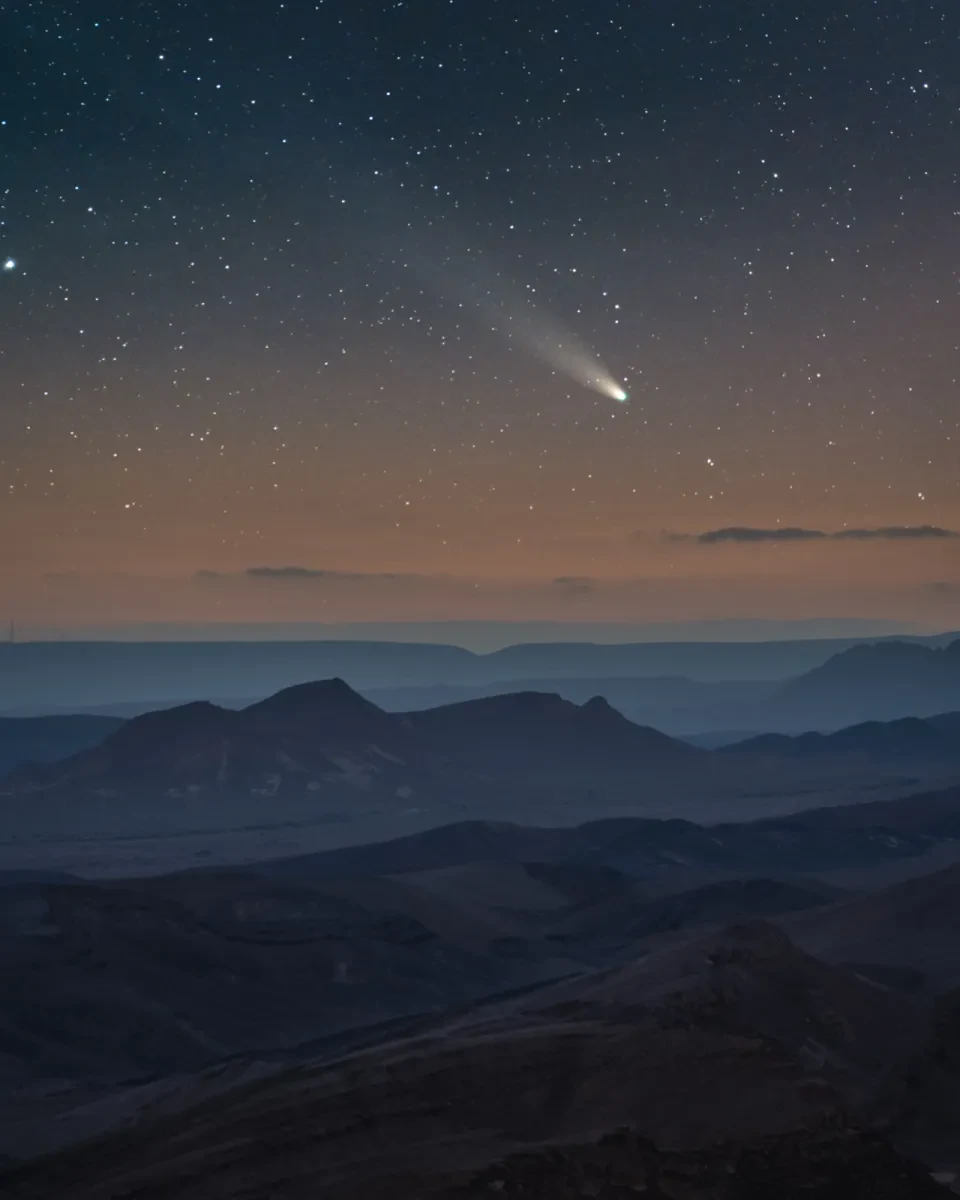
C/2021 A1 (Leonard) In Sky of Israel by Alex Savenok
Negev desert, Israel
"This photo captures a truly magical moment in the Negev desert, as the Sun set behind the rugged terrain and a celestial visitor appeared in the night sky," photographer Alex says.
"The object at the centre of the image is none other than C/2021 A1 (Leonard), a comet that captured the attention of astronomers and stargazers around the world when it made its closest approach to Earth in 2021–22. Against the backdrop of the vibrant sunset, the comet appears as a bright and ethereal presence, its long tail stretching outwards like a cosmic beacon. The faint glow of the stars in the background adds to the sense of awe and wonder, creating a truly breathtaking, peaceful, otherworldly scene."
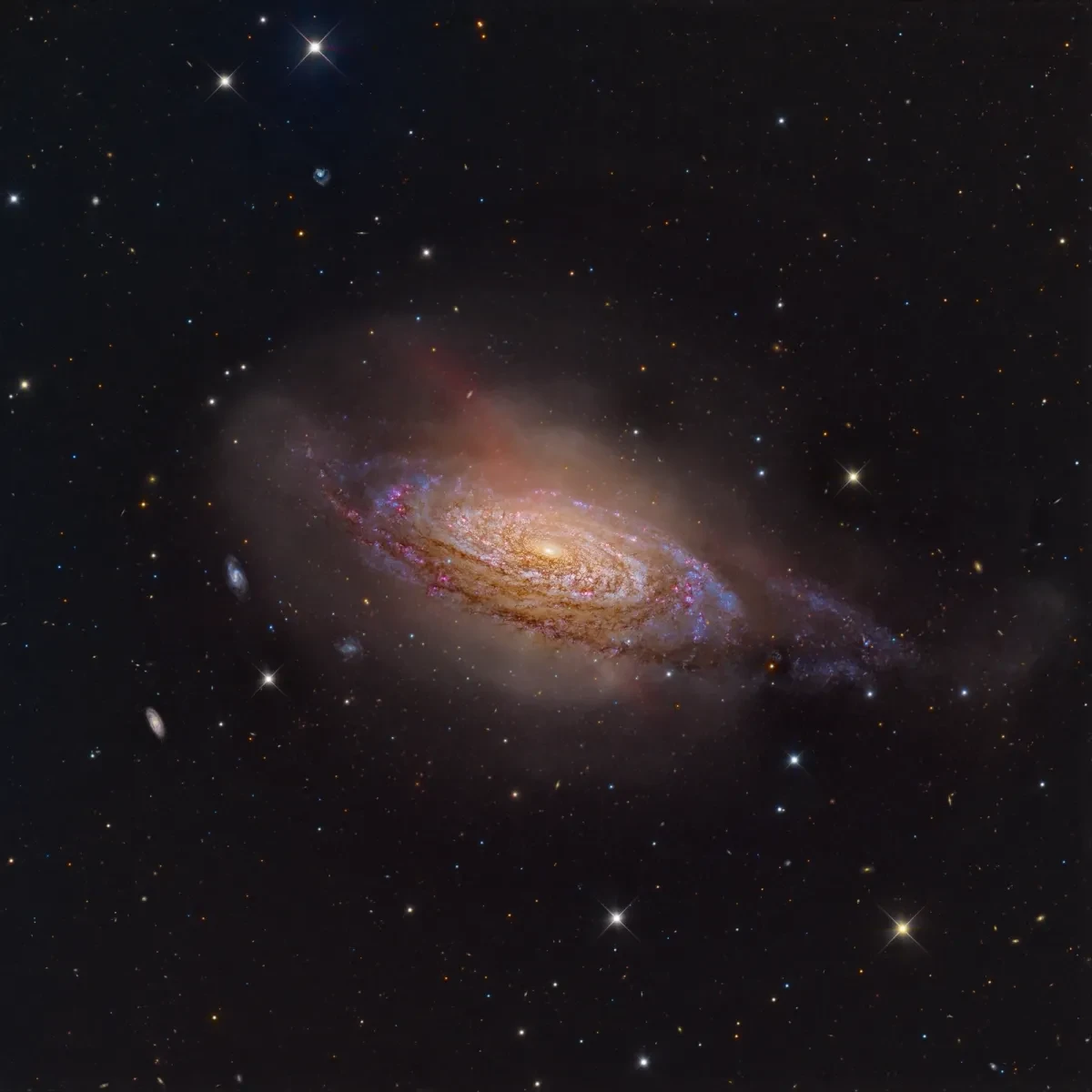
NGC 3521: Marquise in the Sky by Mark Hanson and Mike Selby
El Sauce Observatory, Río Hurtado, Chile
The astronomers say, "Like a big solitaire marquise diamond, this wonderful night-time galactic gem is 35 million light years away in the constellation Leo. A flocculent intermediate spiral galaxy, NGC 3521 lacks the clearly defined arm structure that we see in some other spirals.
"Surrounded by dust, the galaxy has numerous star-forming areas and a luminous centre. The dust bubbles are likely to be from encounters and mergers long ago with satellite galaxies. There are also rarely seen Hydrogen Alpha jets emanating from this galaxy."

Green Snakes by Filip Hrebenda
Vikten beach, Lofoten Islands, Norway
"It doesn’t matter how many times I see the aurora, it fascinates me as if I were seeing it for the first time. When there is good solar activity combined with clear skies, places like Lofoten in the north of Norway can offer amazing views," Filip says.
"This photo was captured from Vikten, one of the region’s lesser-known beaches. For this scene, the trick was to find a position where the reflection of the mountain, including its peak, would be visible in the water. When there is low tide on Vikten beach, many small pools will appear in the rock paths hollowed out by the ocean. On this night, the reflection was then beautifully complemented by the aurora. It’s hard to have everything sharp when shooting in low light conditions, so I used six single shots to focus stack the foreground, waited 90 minutes for the aurora to appear and then took several photos until I had the ideal formation for my composition."
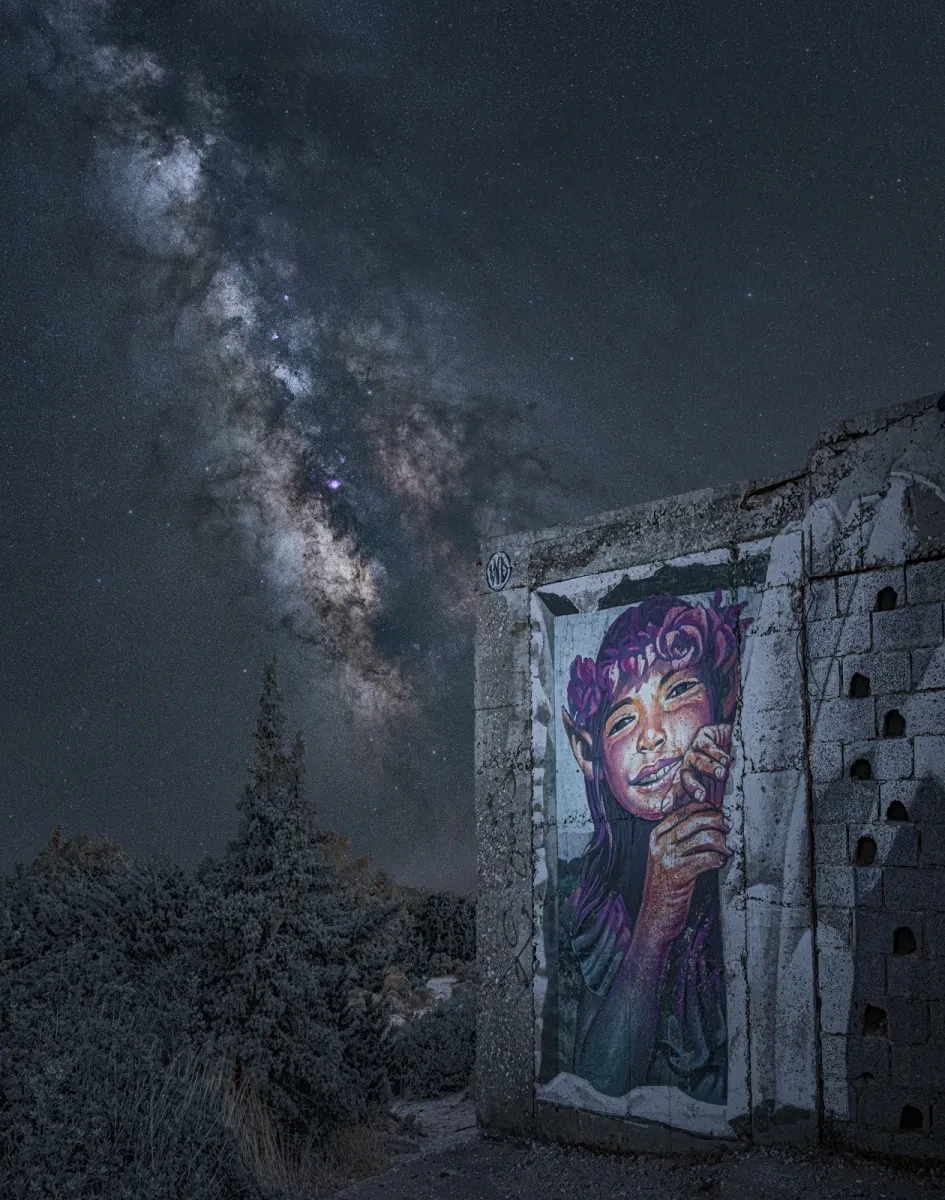
Pandora's Box by Derek Horlock
Alyko Beach, Naxos, Greece
Derek explains, "The image of Pandora on the wall in this photograph is by ‘Wild Drawing’, also known as ‘WD’, a Balinese artist on the Greek island of Naxos. It is on a long-abandoned incomplete beach hotel complex. Walking among the ruins is hazardous: there are deep holes in the collapsed concrete floors to avoid.
"According to the ancient Greek myth, Pandora brought evil into the world and caused the downfall of humankind. She did so by opening a mystical box given to her by the god Zeus that contained all the evils of humanity. The moral of Pandora’s Box suggests that curiosity could be dangerous, and some things are best left alone. However, a small satellite space mission co-led by an American Laboratory and NASA flight centre are not going to be dissuaded by the myth; they have called it ‘Pandora’. It is due to be launched by 2025 with the objective to answer the question ‘are we alone?’ They will observe stars and their exoplanets by using a technique called transit spectroscopy to get a better understanding of their atmospheric conditions. This will lay the groundwork for future missions that would then target those planets that have been discovered that are more likely to harbour Earth-like atmospheres."
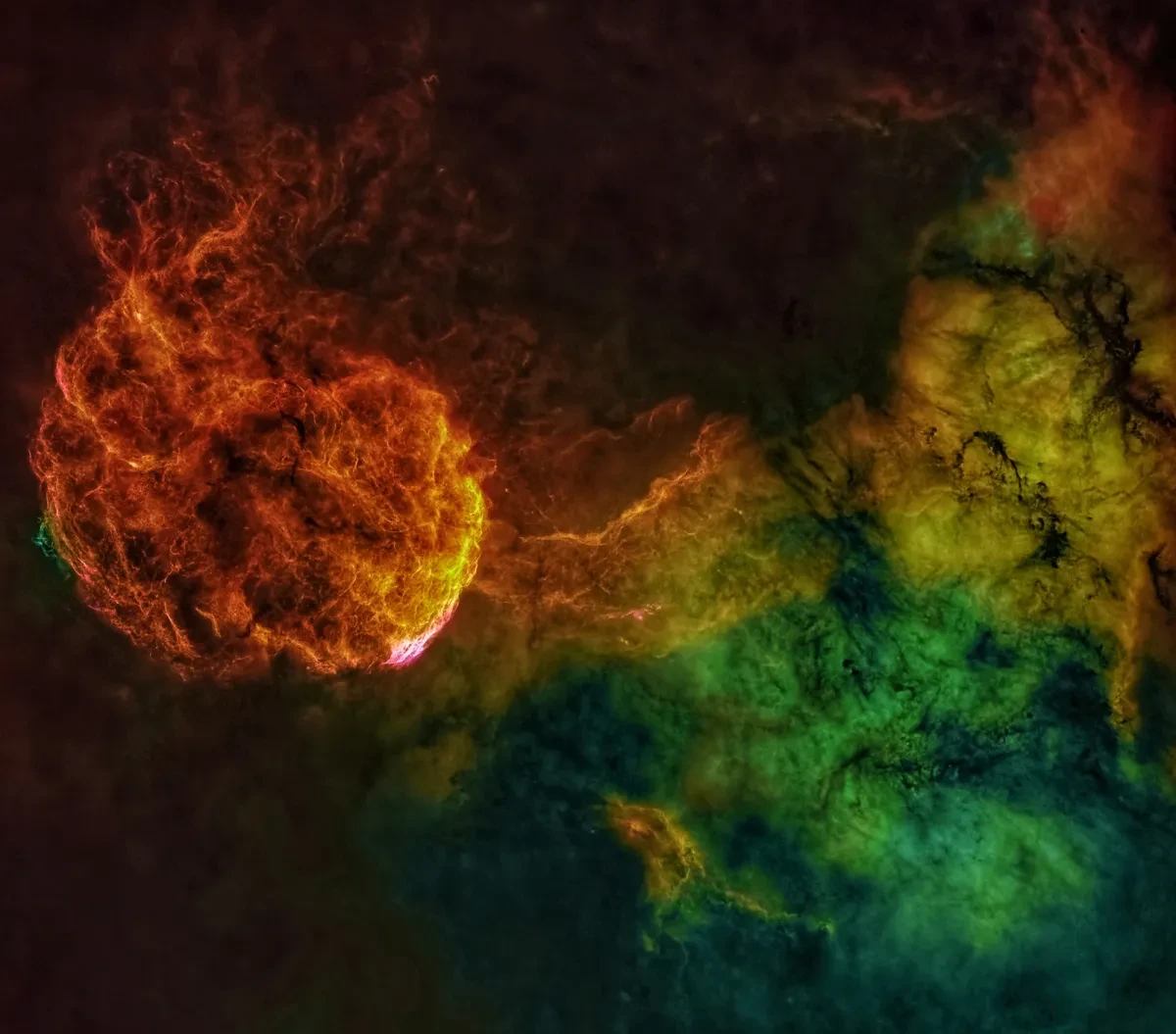
Jellyfish Nebula by Peter Larkin
Coppet, Vaud, Switzerland
Peter says, "I'd only recently made the switch from OSC (one-shot-colour) to mono, and was quite excited, having seen many stunning SHO images around. The Jellyfish Nebula I shot was only my second attempt at mono. I had a stretch of clear skies and started with H-alpha, then OIII and finally SII from my garden close to Geneva, Switzerland. Once I had enough data, I went through each sub individually and removed any which weren't visually perfect.
"On doing the first stack of the H-alpha using APP (Astro Pixel Processor), I was blown away by the detail and knew I was onto something. On combining with the SHO palette in PixInsight, I was immediately pleased. The image needed very little processing to bring out the contrast and details. Needless to say, I'll be sticking with mono, and taking my time, to keep the standard high. My Jellyfish Nebula image has become a family favourite, and I'm sure one day it will be on my living room wall!"
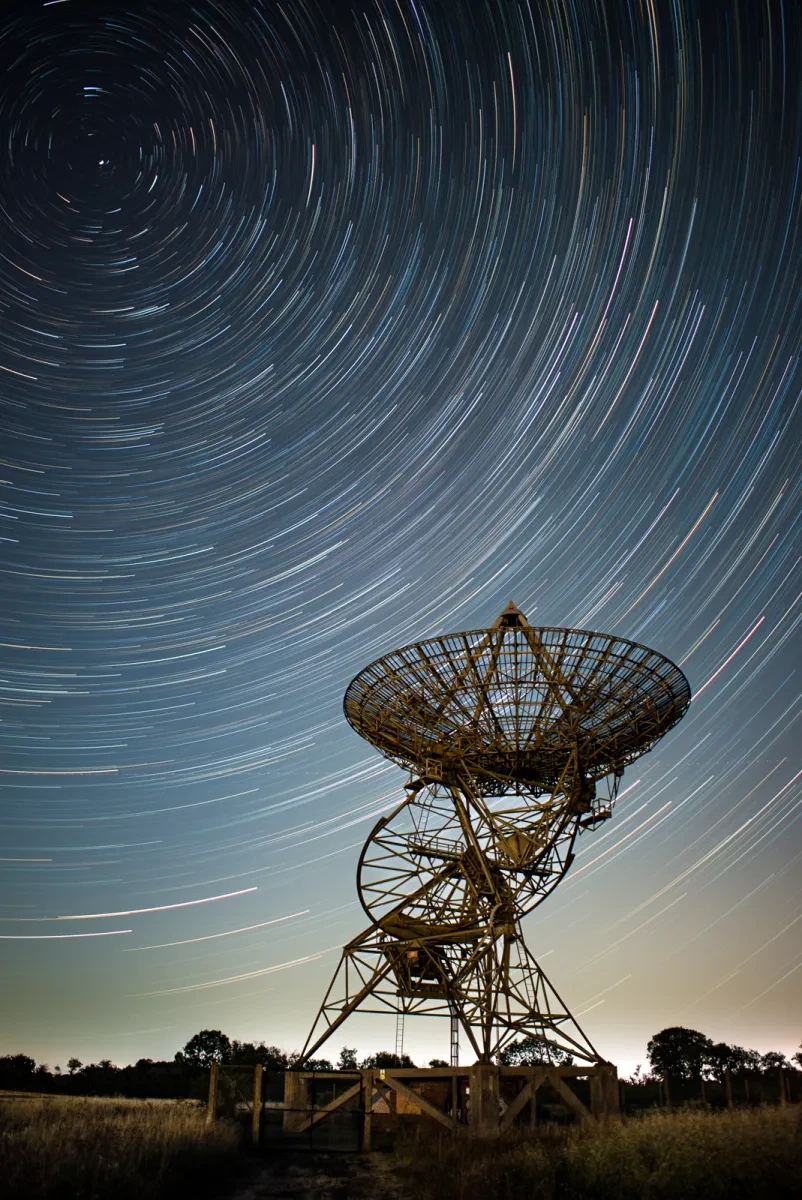
Radio Polaris by João Yordanov Serralheiro
Mullard Radio Astronomy Observatory, Cambridge, United Kingdom
João says of the image, "Inspired by the old, deactivated radio telescope antennas, this was my first successful attempt to take a star-trail image. I used a simple remote shutter which was locked for continuous images with 30 seconds exposures. At the time I could not obtain an intervalometer to control continuous multiple exposures."
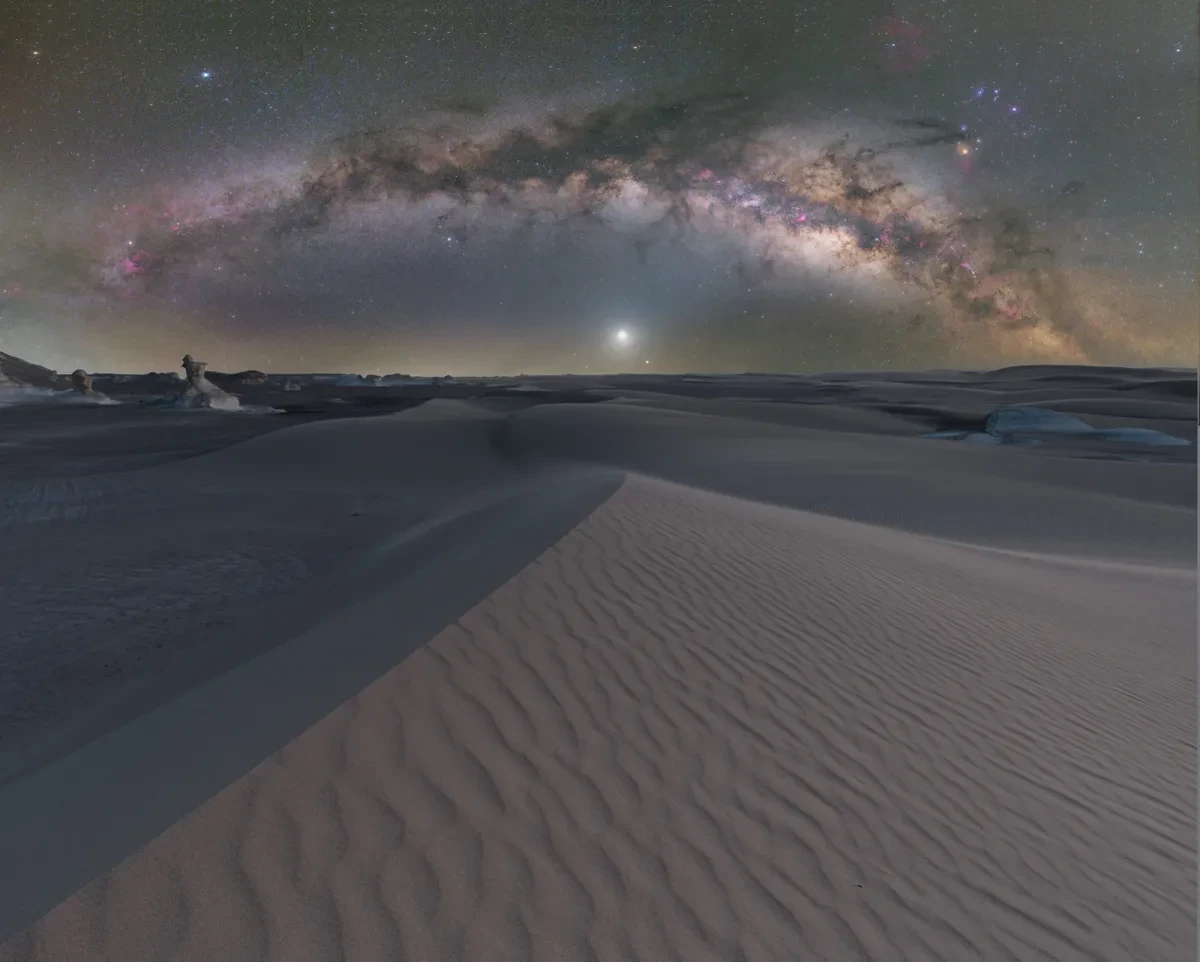
Dune by Burak Esenbey
White Desert National Park, Egypt
"Dunes are the reason I love to shoot in the desert. Leading lines and structures are what you need, as well as an excellent sky quality, to shoot in the White Desert of Egypt," Burak says.
"The big bright object in the middle of this photograph is Venus – it was quite prominent in the sky. This shot is made from a vertical panorama with a tracked sky."
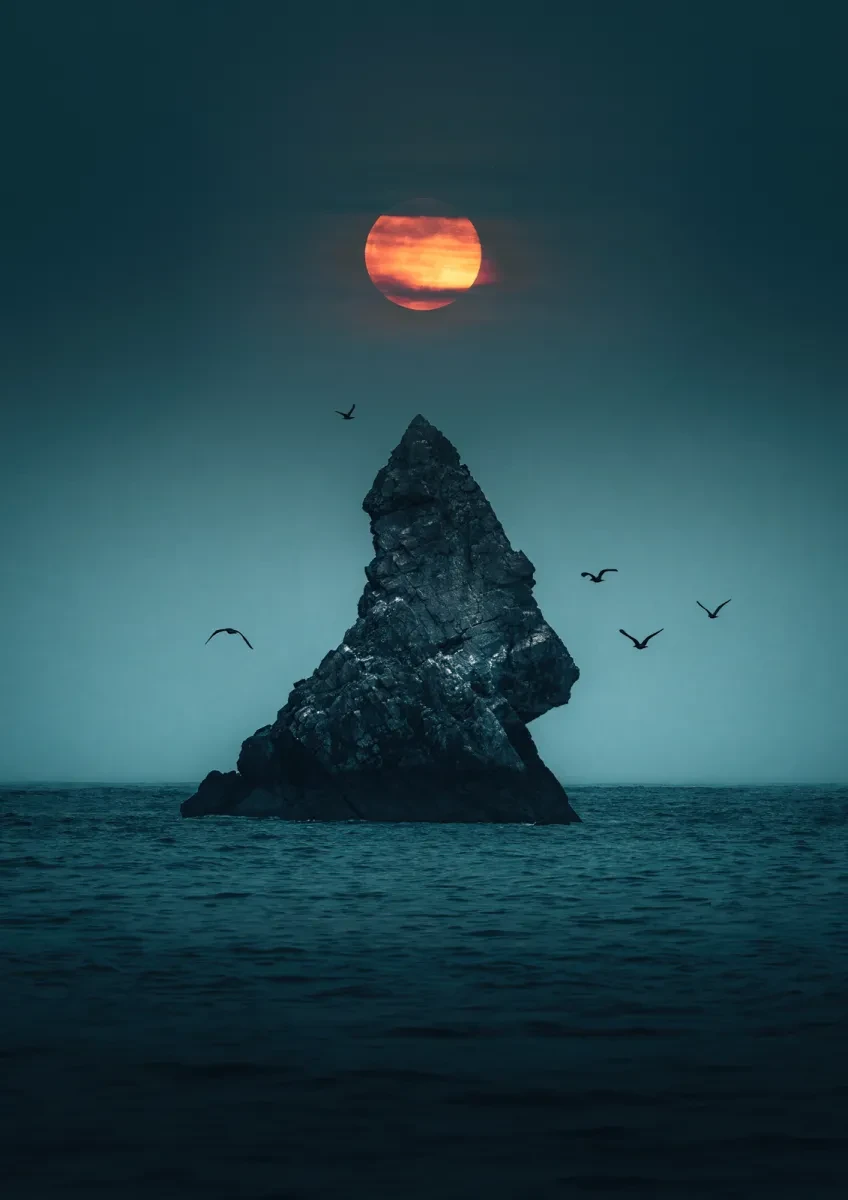
A Rocky Rise by Carl Evans
Broadhaven, Pembrokeshire, United Kingdom
"This is an image of the Full Moon rising over Church Rock in Broadhaven, Pembrokeshire," says photographer Carl.
"I stood on the beach at Broadhaven for a couple of hours waiting for the Moon to rise. The clouds initially hid the Moon and as I was walking away it appeared among the clouds, adding a nice effect over it. I took two shots for the image: one for the Moon and one with a faster shutter speed to catch a flock of birds flying around the rock."
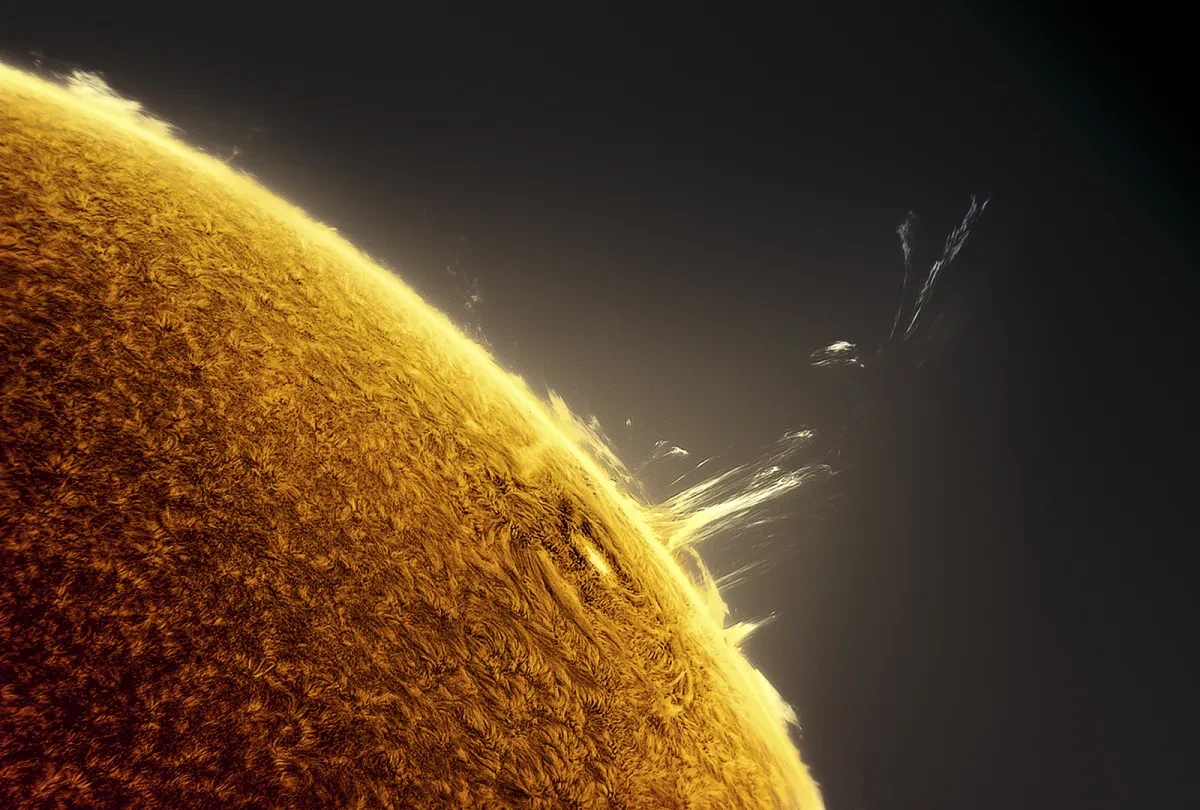
Solar Flare X1 from AR2994 in 'Motion' by Miguel Claro
Dark Sky Alqueva region, Évora district, Portugal
"I was testing my new camera from Player One Apollo-M Max and photographing another region of the Sun, when I was notified by the SpaceWeatherLive app that an eruption was ongoing at 13.47 (UTC, Universal Time) with the release of an extraordinary X1-class solar flare [X class flares are the largest]," Miguel says.
"I had to immediately change my initial plans and pointed the telescope as quickly as possible to the limb where the flare departed from sunspot AR2994, already hidden behind the edge of the Sun. According to SpaceWeatherLive, ‘the explosion produced enough radiation for a strong shortwave radio blackout over the mid-Atlantic ocean and Europe’. Conditions were unstable, but I managed to make a short timelapse of about 27 minutes."
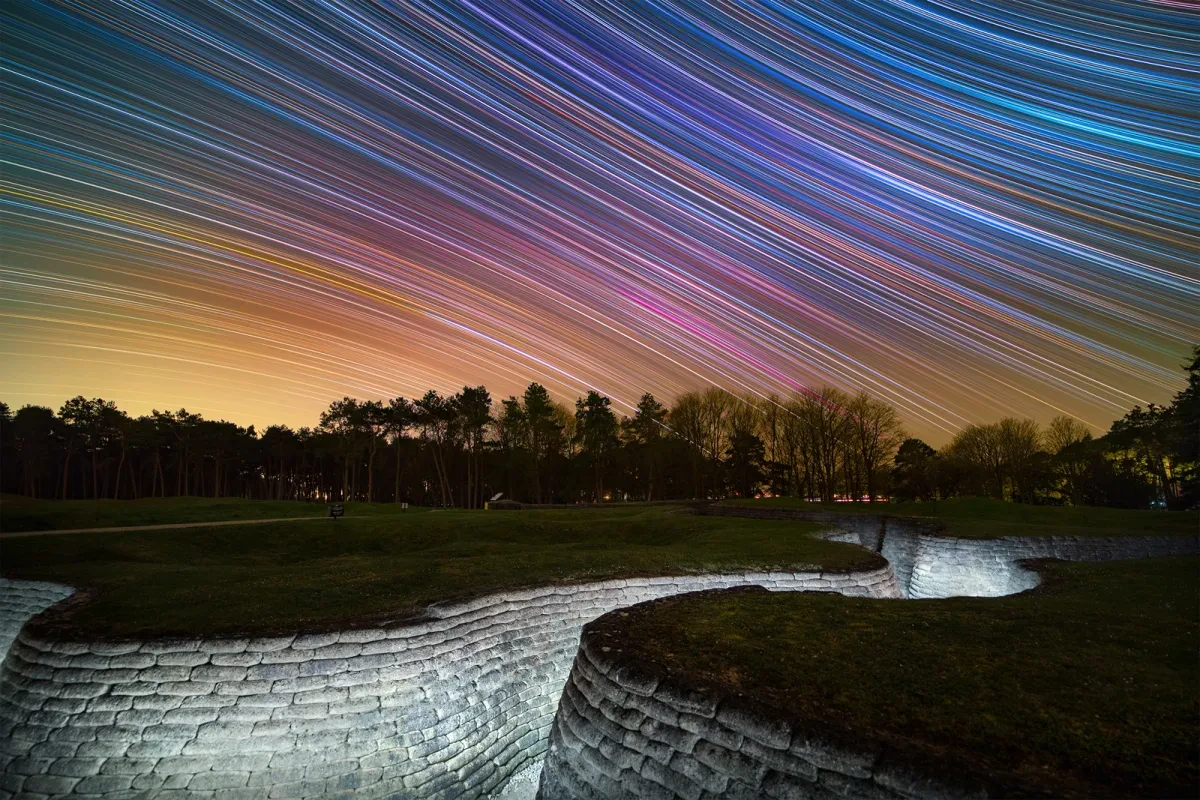
Celestial Equator Above First World War Trench Memorial by Louis Leroux-Gere
Vimy, Pas-de-Calais, France
Louis says, "This is my first star trail taken over a five-hour exposure. This photograph was captured at the Canadian National Vimy Memorial in northern France, the site to remember all Canadians who served in the First World War. I slept in those trenches while my camera captured the rotation of the sky and was absolutely amazed by the stars."
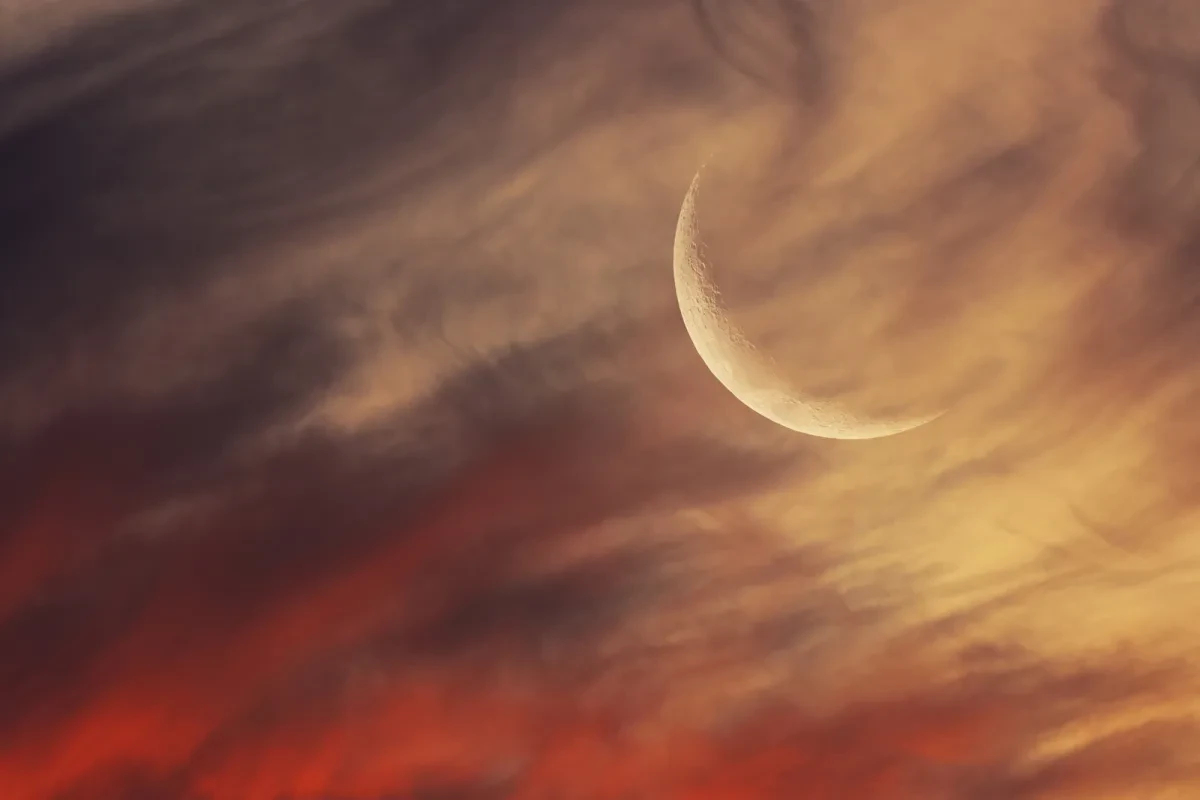
Crescent Moon in a Magical Sunset by Eduardo Schaberger Poupeau
Rafaela, Santa Fe, Argentina
Eduardo explains, "During the sunset of 1 August 2022, the sky gave us an impressive spectacle: the clouds seemed to turn into flames with a very intense red colour. This magical moment was enhanced by the presence of the crescent Moon with 16% of its surface illuminated. To obtain this image, I bracketed 3 exposures at +1EV and -1EV to get a more dynamic range and then composited it in Photoshop."
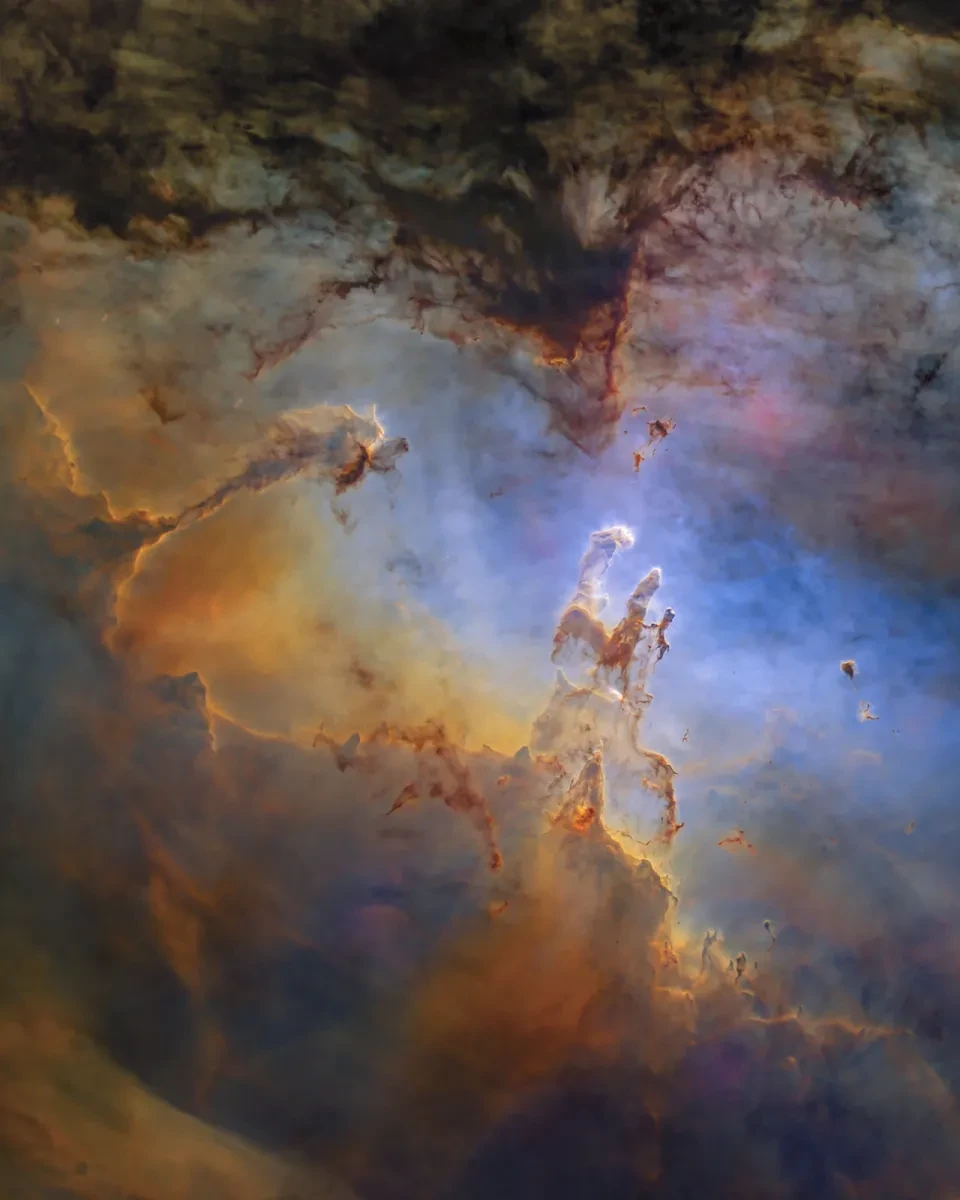
Starless Pillars by Jason Guenzel
Milford, Michigan, USA
"Messier 16, the Eagle Nebula, is one of those targets that needs no introduction. The Hubble ‘Pillars of Creation’ image made this area instantly recognizable. The nebula is a stellar nursery about 7,000 light years away from Earth. Within a giant cloud of hydrogen, a pocket has been carved out by the stellar winds of the new born stars," Jason explains.
"The pillars themselves are slowly being eroded by the same mechanism. This detailed look into the core of the nebula was captured using narrowband filters to isolate ionized gasses within. The image is presented in the Hubble SHO colour palette with a twist. An additional near infrared filter was used to produce some deeper tonality into the violet end of the spectrum. In post-processing, the stars have been removed from the image to let the eye wander unimpeded through the layers of nebulosity. All the processing effects combine to reveal the abstract art of the Cosmos."
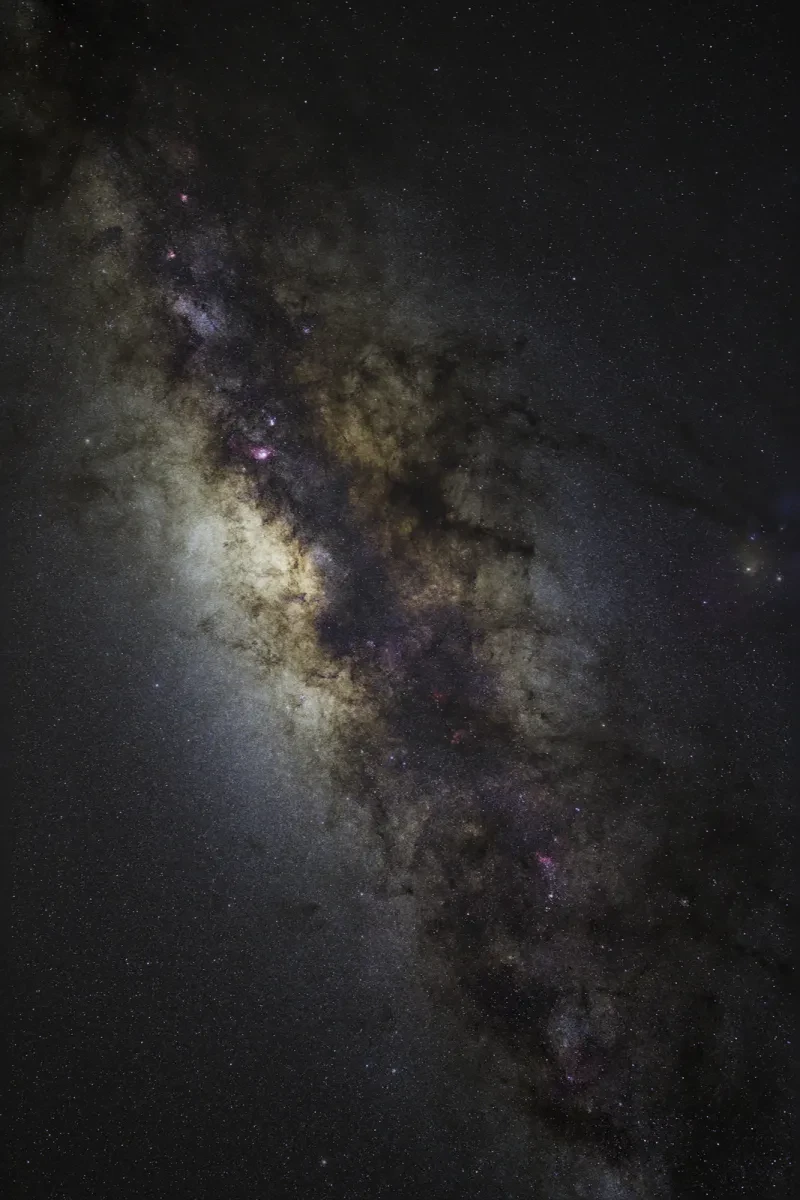
The Milky Way by Kush Chandaria
Okavango Delta, Botswana
"It’s easy to forget about what is above our heads every night. Each day as more lights turn on, the night sky fades, masking the natural beauty of the sky from most people’s view. For the few of us who are lucky enough to experience a truly dark sky, the sight is unforgettable," according to Kush.
"The night I took this image was the first time I had seen the Milky Way so clearly with the naked eye. Unfortunately, due to light pollution, fewer and fewer locations allow for such an experience. I can only hope that in capturing this image I can share the same feeling of amazement that I felt when I looked up at the sky that night."
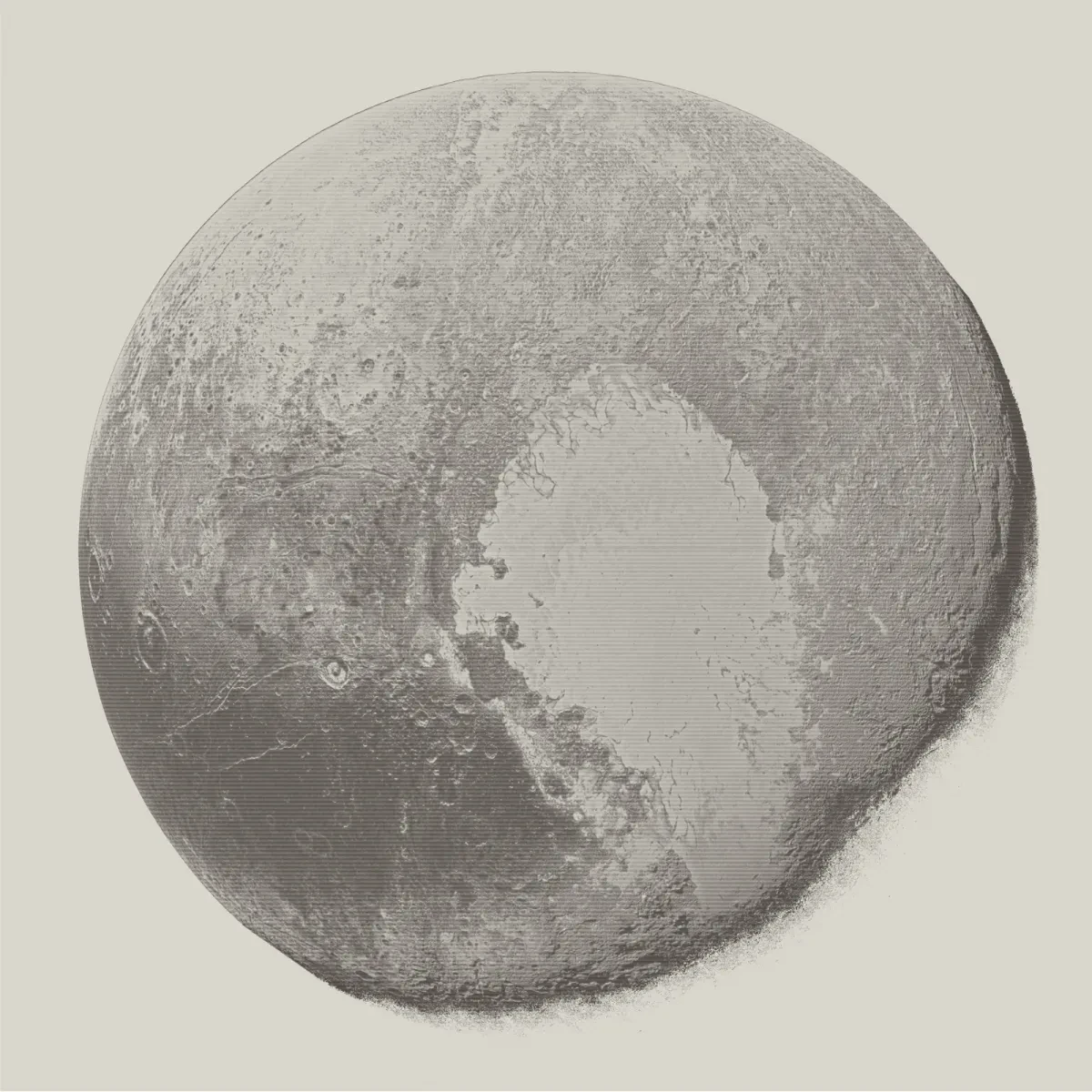
Cassinified Pluto by Sergio Díaz Ruiz
"I was fascinated when I saw Carte de la Lune by Jean-Dominique Cassini (1625–1712) for the first time. Such a romantic and captivating artwork, resulting from meticulous observations of the Moon with the instruments available at the time," Sergio says.
"When Pluto images came from the New Horizons spacecraft sailing at the confines of the Solar System, I wondered ‘what if Cassini could see this remote new world with his own eyes?’ This work humbly tries to answer that by using image processing techniques on these fantastic, otherworldly images.
"Starting with already calibrated and combined data from the archive, I generated a monochromatic version, and enhanced its detail by using PixInsight, to reveal the fine textures in the brightest areas of the dwarf planet. This monochromatic image was then used as the input for a script to convert pixel intensities to line thickness, in order to simulate the rendering of an engraved print. Line spacing and thickness parameters were optimized to maintain maximum detail of the surface features. The resulting image, already using the colour palette measured from the scan of Cassini’s Carte de la Lune provided by the Library of the Utrecht University, was further processed with Photoshop for adding ripple to the strokes and noise effects to the background, emulating a more realistic finish."

Emerald Roots by Lorenzo Ranieri Tenti
Vestrahorn, Stokksnes, Iceland
"This shot was taken along the amazing black beach in front of the famous mountain of Vestrahorn during a magical night of shining aurora," Lorenzo says.
"I love how the ‘Green Lady’ lights up the frost with green while the rising Moon makes ripples in the sand shine like gold. It has been captured as a vertical panorama composed from a focus-stacked image of the foreground and a picture of the mountain and sky portion. It was pre-edited in Lightroom, stitched in PTgui Pro, edited and finalised in Photoshop."

Visit the Royal Observatory
Exhibition partners


Main image: Green Snakes by Filip Hrebenda

